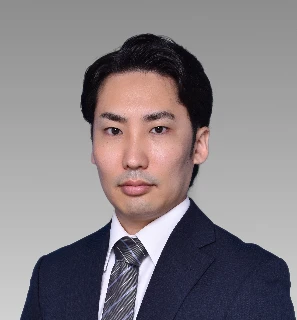2851 - Impact of Thyroid Irradiation on Thyroid-Related Immune-Related Adverse Events (irAEs) in Head and Neck Cancer Patients Receiving Immune Checkpoint Inhibitors
Presenter(s)

M. Takaki1, T. Yoshitake2, K. Matsumoto1, Y. Shirakawa2, H. Wakiyama1, O. Hisano1, H. Imafuku1, R. Matsukane3, M. Matsuo4, and K. Ishigami1; 1Department of Clinical Radiology, Graduate School of Medical Sciences, Kyushu University, Fukuoka, Japan, 2Department of Radiology Informatics and Network, Graduate School of Medical Sciences, Kyushu University, Fukuoka, Japan, 3Department of Pharmacy, Kyushu University Hospital, Fukuoka, Japan, 4Department of Otorhinolaryngology, Graduate School of Medical Sciences, Kyushu University, Fukuoka, Japan
Purpose/Objective(s): Immune checkpoint inhibitors (ICIs) have become widespread in cancer treatment but can cause immune-related adverse events (irAEs), including thyroid dysfunction. While prior thyroid irradiation is common in head and neck cancer patients, its impact on the risk of ICI-induced hypothyroidism remains unclear. This study aims to evaluate the impact of prior thyroid irradiation on the development of hypothyroidism in head and neck cancer patients receiving ICIs.
Materials/Methods: We conducted a retrospective study of 164 patients who received ICI treatment for head and neck cancer at Kyushu University Hospital between April 2017 and December 2021. Patients with pre-existing thyroid dysfunction or those who did not have thyroid function evaluated before and after ICI treatment were excluded. Seventy-nine patients were analyzed for thyroid-related adverse events. The relationship between hypothyroidism and mean thyroid dose was assessed using the Mann-Whitney U test and receiver operating characteristic (ROC) analysis. Univariate and multivariate analyses using the Cox proportional hazard model were performed to evaluate clinical predictors of hypothyroidism, including sex, age, number of ICI cycles, and mean thyroid radiation dose.
Results: During a median follow-up of 10.7 months, 18 remained disease-free, 6 achieved no evidence of disease status, 12 had persistent disease, and 61 died (55 from primary disease, 6 from other causes). Grade =2 hypothyroidism developed in 20 patients (25.3%). No cases of grade =2 hyperthyroidism were observed. Patients who developed hypothyroidism had significantly higher median thyroid irradiation doses than those who did not (39.3 Gy vs. 22.9 Gy, p = 0.025). ROC analysis identified a thyroid irradiation threshold of 30.9 Gy as a significant predictor of hypothyroidism (AUC = 0.716, p = 0.002). Both univariate and multivariate analyses confirmed that pre-existing thyroid dysfunction and a mean thyroid radiation dose =30.9 Gy were independent risk factors for post-ICI grade =2 hypothyroidism.
Conclusion: Prior thyroid irradiation significantly increases the risk of hypothyroidism following ICI treatment in head and neck cancer patients. Limiting the mean thyroid irradiation dose to less than 30.9 Gy may reduce the risk of hypothyroidism.
| n | 1y-cumulative incidence | Univariate analysis (p-value) | Multivariate analysis (p-value) | ||
| Sex | Male | 55 | 23.0 | 0.0592 | |
| Female | 24 | 47.0 | |||
| Age (year) | >67 | 36 | 21.4 | 0.3986 | |
| =67 | 43 | 31.3 | |||
| Thyroid function before ICI administration | Within normal limits | 50 | 11.0 | 0.0003 | 0.0055 |
| Outside normal limits | 29 | 52.0 | |||
| Course of ICIs | >6 | 39 | 31.6 | 0.2913 | |
| =6 | 40 | 22.7 | |||
| Mean dose of thyroid gland | >30.9 | 41 | 43.5 | 0.0013 | 0.0104 |
| =30.9 | 38 | 10.2 |
